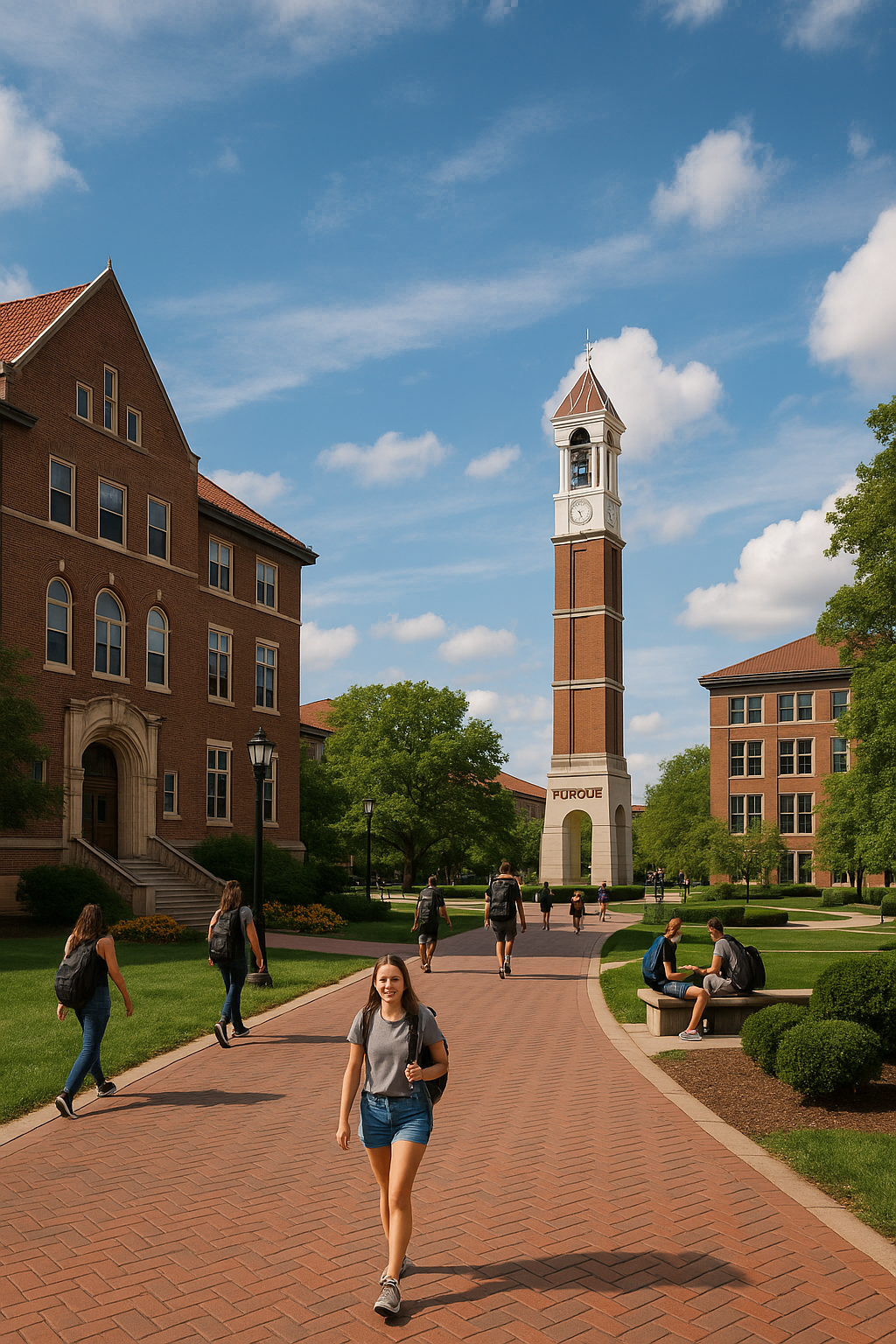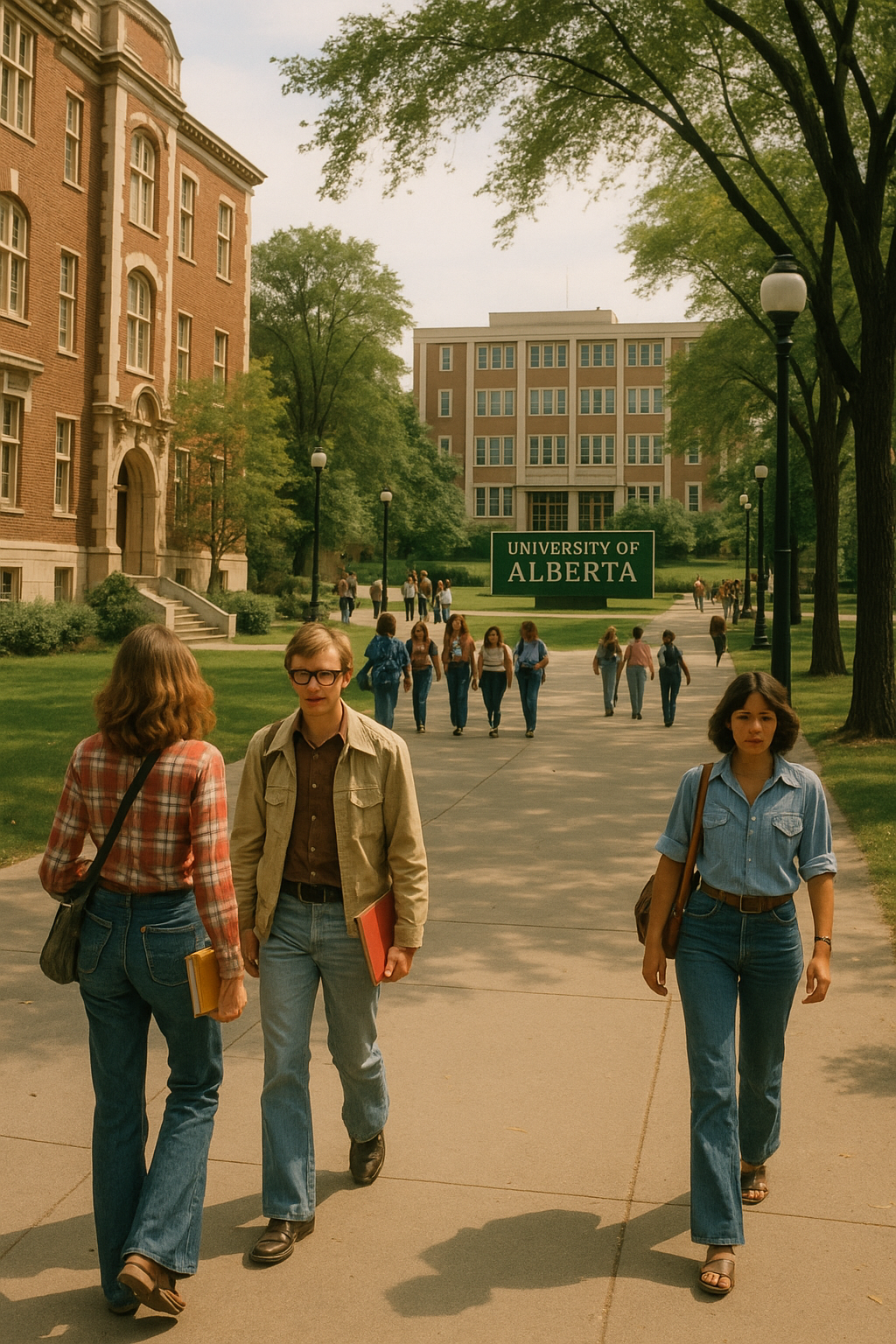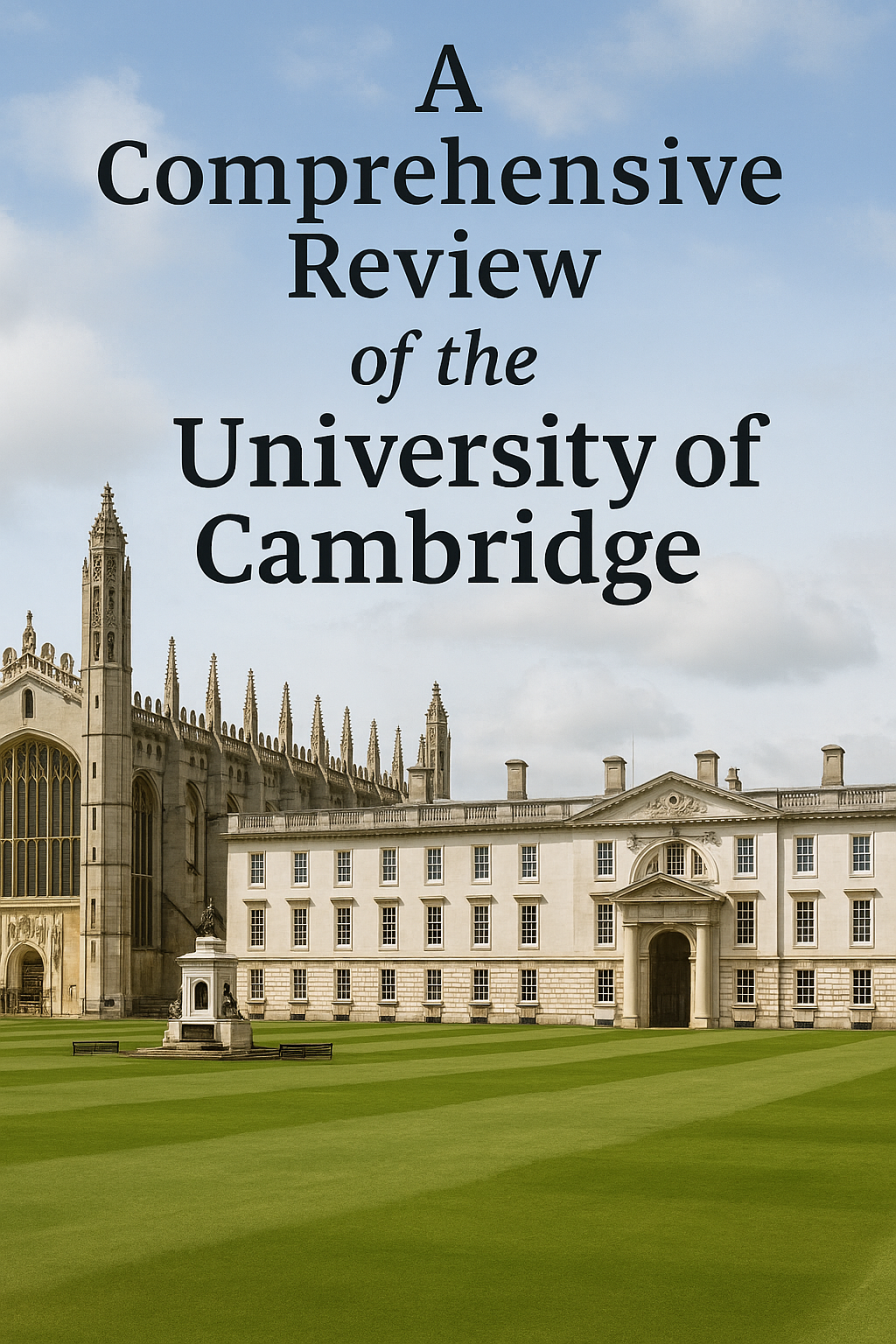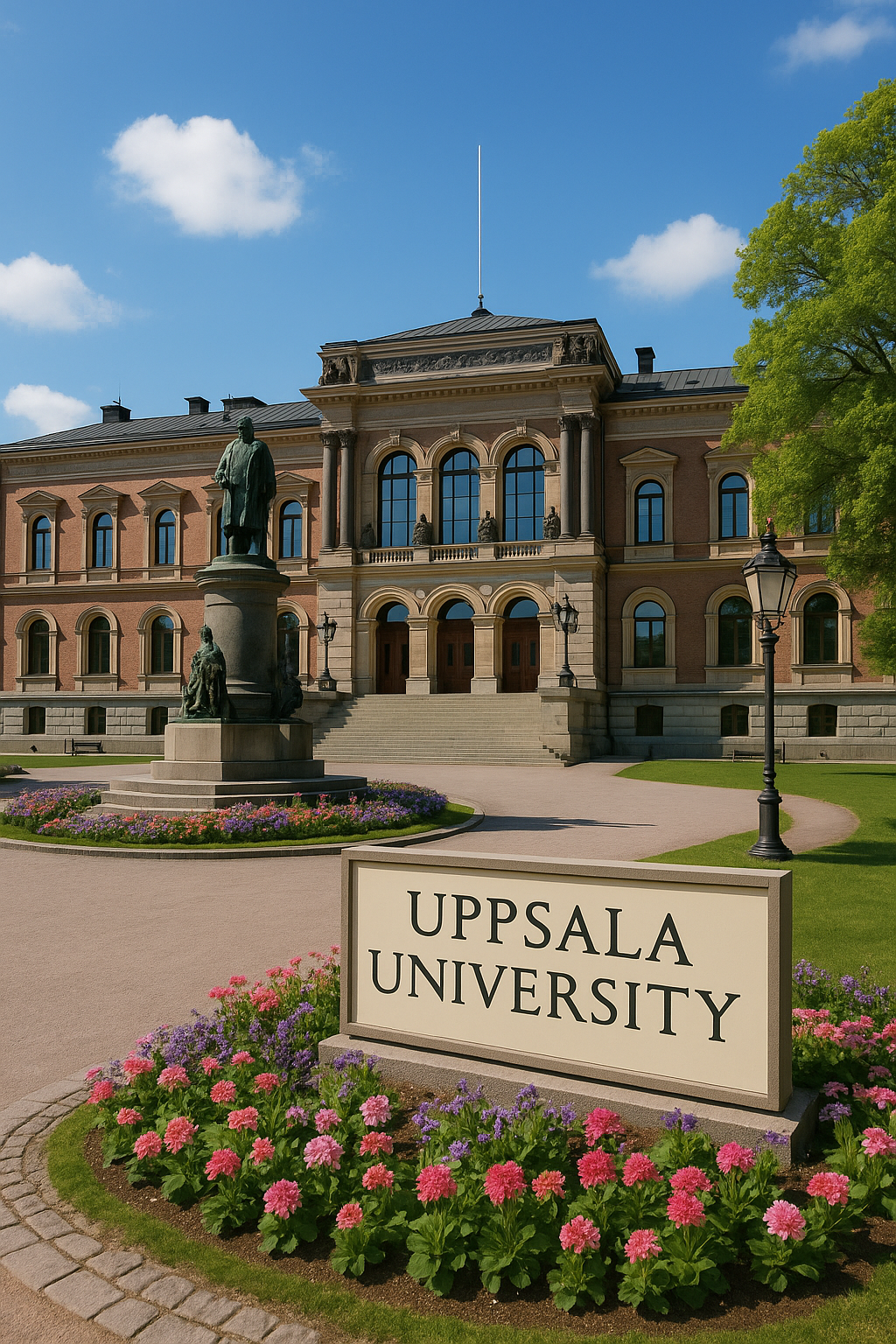Introduction to Purdue University
Welcome to our latest Wondering Walks of Wonder campus tour. Today, we’re headed to Indiana—specifically, West Lafayette, Indiana—for a tour of Purdue University. Established in 1869, its inception was driven by the contributions of Lafayette businessman John Purdue, who provided the necessary land and funding to found a college dedicated to the advancement of sciences, technology, and agriculture. The university held its first classes on September 16th, 1874.
Purdue Memorial Union
Our campus tour begins here in front of the Purdue Memorial Union. The idea for a student union was first envisioned by George O. Hayes and the class of 1912. They proposed the construction of a building to serve as an activity hub for Purdue students, alumni, and faculty. To fund this vision, the class of 1912 voted to collect a $5 assessment fee from each senior, initiating a fund to build a center for university activities. This tradition continued with subsequent classes until the United States entered World War I in 1917, shifting the community’s efforts to the war effort. By the end of the war, 43 men and women from the university had served, with 67 earning gold stars. Construction of the Purdue Memorial Union began in 1922, and the building opened its doors in 1924.
Stewart Center and the Spirit of the Land Grant College Mural
In 1958, the university library saw significant expansion, transforming into the Purdue Memorial Union. The construction for this expansion began in 1954, resulting in facilities designed for a variety of uses. Hence, the Stewart Center was built in 1958. This new addition accommodated student activities, including recreational as well as browsing rooms. A notable feature of the student center is the mural called “The Spirit of the Land Grant College,” painted above the entrance to the old library. Created by Eugene Savage at a cost of $26,000, the mural was dedicated on October 4th, 1961. It depicts Purdue’s journey from the signing of the Morrill Act by Abraham Lincoln through the education of its students to the global impact of Purdue’s educational contributions.
Heavon Hall
The current Heavon Hall, the third building to bear the name on Purdue’s campus, was constructed in 1959. The original hall was completed in 1894 but tragically burned down just four days after its dedication. A second Heavon Hall was built to replace it, but in 1956, it was partially demolished to make way for the present structure that we see today. Initially, the new Heavon Hall was home to the Departments of English and Speech as well as the Speech and Hearing Clinic.
Grom Hall
Grom Hall was built in 1906 and was originally known as the Civil Engineering Building. When it was first constructed, it contained two main floors as well as an attic story. The first story was devoted to sophomores and beginning classes in field and office work. In the east end, a large room for the sophomore class was created for students to work on mapping, computing, as well as demonstration work. The building had an addition added to it in 1928, was renovated in 1967, and renamed Grom Hall in 1968.
Richard Benbridge Weatherall Laboratory of Chemistry
The first building of what is now known as the Richard Benbridge Weatherall Laboratory of Chemistry was constructed in 1930. Originally referred to as the New Chemistry Building, it was built to accommodate the growing number of chemistry and engineering students at Purdue. During World War II, the building played a significant role in the research efforts for the Manhattan Project. Researchers at the facility worked on recovering uranium and preparing fluorocarbons that were crucial for the work at the nuclear lab facilities in Oak Ridge, Tennessee. In 1950, construction began on a three-part addition to the building that further increased its capacity, and it was once again expanded in 1970 with the Herbert C. Brown Laboratory of Chemistry.
Stanley Couter Hall
Constructed in 1917, Stanley Couter Hall, originally known as the Biology Building, is a three-story structure made of stone and brick. At its inception, the building housed a variety of facilities, including six general student laboratories, nine classrooms, a lecture room, department and administrative offices, as well as a museum and herpetarium. It also included stock rooms for animals. In 1959, the Department of Biological Sciences relocated, prompting a major remodel of the building to accommodate the Department of Modern Languages. A large addition was added to Couter Hall in 1994.
Thomas S. and Harvey D. Wilmeth Activity Learning Center
The Thomas S. and Harvey D. Wilmeth Activity Learning Center, also known as the WC, is a dynamic multi-purpose library facility here in the heart of Purdue University’s campus. The center features 27 active learning classrooms as well as collaborative and study spaces and a grand reading room with panoramic views of the iconic Purdue Bell Tower. This tower stands about 160 feet tall and is a prominent landmark on the Purdue University campus. The tower’s design pays homage to the original Heavon Hall Tower, which was dismantled in 1956, by incorporating its bells as well as certain design elements. The construction of the bell tower was sponsored by the class of 1948, and construction was completed in 1996.
Mechanical Engineering Building
The Mechanical Engineering Building, initially known as the New Mechanical Engineering Building, was constructed in two phases—the first completed in 1931 and the second in 1933. In 1942, the Aeronautical Engineering Building was constructed just to the northeast of the Mechanical Engineering Building, and in 1950, an expansion connecting the two buildings occurred. The building saw further development with the addition of the Robert Roger B. Gatewood Wing in 2009.
Max W. and Maureen Brown Family Hall
Originally known as the Electrical Engineering Building, construction began in 1925, followed by a second building in 1926. Additional expansions to the building occurred in 1942 and 1996. This historic building served as the home of the Electrical Engineering Department until 2021.
Materials and Electrical Engineering Building
The next building here on our right was originally named the Engineering and Geoscience Complex, which now is the Materials and Electrical Engineering Building, established in 1988. It features a striking two-story glass atrium and hosts two huge laboratory facilities. Within MSE, the Turner Laboratory serves both electrical engineering as well as material engineering students, while the Integrated Optics Laboratory boasts a clean room environment for the precise growth of new materials at the atomic level.
Frederick L. Hovde Hall of Administration
Originally known as the Student Services and Administration Building, the Frederick L. Hovde Hall of Administration stands as a testament to Purdue University’s administrative history. This building was constructed in 1937 as part of a PWA project. Within its walls, one will find the Board of Trustees room as well as various offices, including those of the Dean of Men, the Dean of Women, the President of the University, the Controller, the Accounting Department, and many more.
Data Science Building
The Data Science Building, which at the time of this tour was undergoing some renovation, was originally part of the Pharmacy Student Services and Geosciences Building. It was renamed the Helen B. Schleman Hall of Student Services. However, in December 2022, all student services were relocated elsewhere on campus, and the building was renamed to Data Sciences.
Forny Hall of Chemical Engineering
On our right is Forny Hall, originally constructed in 1939 to cater to the requirements of the Chemistry Department. The building underwent a significant transition in 2002. It was renamed as the Forny Hall of Chemical Engineering, marking a new chapter in the history of the building. Notably, this renaming coincided with the beginning of substantial expansion projects aimed at further enhancing the facilities within the building.
Dillon and Elizabeth Hampton Hall of Civil Engineering
Originally known as the Material and Structural Testing Laboratories Building, the Dillon and Elizabeth Hampton Hall of Civil Engineering structure is located just a bit north of the Chemical Engineering Building. In 1961, it was rebranded as the Civil Engineering Building. Over the years, the building has gone through significant expansion, and in 2012, it was renamed the Dillon and Elizabeth Hampton Hall of Civil Engineering.
Robert E. Heine Pharmacy Building
The Robert E. Heine Pharmacy Building was designed to serve as a hub for the School of Pharmacy and Pharmacal Sciences. Equipped with offices, classrooms, a library, and a state-of-the-art animal research facility, it adds to the pharmaceutical education and innovation on campus. This building was renamed the Robert E. Heine Pharmacy Building in 1985, honoring the contributions of Robert Heine to the field of pharmacy and commemorating the building’s enduring legacy.
Purdue University Student Health Center (PUSH)
The Purdue University Student Health Center, affectionately known as PUSH, has been a pillar of healthcare since it was established in 1961. Initially known as the Student Hospital, it served as a vital hub for the Purdue community. Over the years, it has evolved to meet the changing needs of students and underwent a transition to the Student Health Center in 1991. Inside are patient beds as well as psychiatric, physiotherapy, and additional services for in- and outpatient students.
Neil Armstrong Hall of Engineering
Groundbreaking for the Neil Armstrong Hall of Engineering occurred in 2004. This facility encompasses classrooms, laboratories, and many other rooms that foster collaboration and innovation in the engineering world. It serves as a home to the School of Aeronautics and Astronautics, the School of Materials Engineering, as well as the School of Engineering Education. This building honors the legacy of Neil Armstrong, a distinguished Purdue alumnus. Armstrong graduated from Purdue’s School of Aeronautics in 1955 but is notably recognized as the first person to set foot on the moon during NASA’s Apollo 11 mission in 1969. His remarkable career included service as a combat pilot in the Korean War, spacecraft commander for the Gemini 8 mission in 1966, as well as various test pilot roles. Even after his NASA tenure, Armstrong remained engaged with Purdue, contributing to many university endeavors. Funding for this hall came from state allocations as well as private contributions.
Ward L. Lambert Fieldhouse and Gymnasium
The Ward L. Lambert Fieldhouse and Gymnasium was constructed in 1937. Originally named the Fieldhouse and Gymnasium for Men, this building was constructed using stone, brick, steel, as well as reinforced concrete. Within its walls were housed the offices of the Division of Physical Education for Men, training areas, locker and shower facilities, classrooms, small gymnasiums, as well as a large gymnasium. Also inside the building was an Olympic-sized swimming pool equipped with a water conditioning system. The building itself was financed as a Public Works Administration (PWA) project during the 1930s. Tragically, on February 24th, 1947, wooden bleachers on the east side collapsed, resulting in the loss of three lives.
Mackey Arena
The G.U. Mackey Arena, also known as Purdue University Arena, was constructed in 1967. It was renamed the G.U. Mackey Arena in 1971 and significantly expanded in 2011.
Ross-Ade Stadium
Ahead of us is the Ross-Ade Stadium, which was built in 1924. This football stadium was initially designated for athletic competitions as well as physical and military training. Over time, many enhancements have been added to this infrastructure. In 1968, a concession stand as well as additional ticketing stands and restrooms were added, followed by a larger bleacher section south of the football field in 1970. In 2001, a major renovation occurred, which completely changed and added to the stadium itself.
Franklin Levering Cary Quadrangle
The Franklin Levering Cary Quadrangle contains many buildings constructed in the mid-1920s, starting around 1927 and beyond. All of these are residence or dorm room-type buildings that are fashioned of brick, stone, and reinforced concrete. Inside are accommodations for students, along with a manager suite, spacious dining halls, fully equipped kitchens, lounges, as well as independent learning areas. At one time, there were multiple lounges, a billiard room, and many more areas. In fact, there were areas at one time dedicated just for the reception of female guests, but much of that has changed. Originally, the room and board were about $42 annually, and I know for a fact that that has changed.
Purdue Armory Building
Home to the Purdue ROTC (Reserved Officer Training Corps), the Armory Building was initially constructed in 1916. However, this building that we see today was built in 1918. Upon its original construction, it served as the headquarters for the Army, Air Force, and Navy ROTC battalions. A fire damaged the original building in 1916, necessitating its reconstruction.
Chaney Hall of Science
The Chaney Hall of Science marks the establishment of a cutting-edge interdisciplinary STEM teaching facility. Housing 33 state-of-the-art teaching labs, it offers a futuristic learning environment for science and engineering courses. Within its flexible layout, high visibility, and an abundance of technology, the hall fosters innovative peer-to-peer engagement, encouraging new modes of collaboration and exploration in the fields of science and engineering.
Edward C. Elliott Hall of Music
The Edward C. Elliott Hall of Music, also known as just the Hall of Music, was initially constructed in 1914. It’s a grand five-story structure that’s about 280 by 190 feet long. It features an air-conditioned main auditorium, balcony, and gallery and was designed to accommodate about 6,100 individuals when it was first constructed. Within its walls are housed band instruments, practice rooms, a main radio broadcasting studio, offices, dressing rooms, and band drill rooms. Originally established as a PWA (Public Works Administration) project, it underwent a name change to Elliott Hall of Music in 1958.
Felix Hoshall Memorial Gymnasium
Originally named the Memorial Gymnasium, Felix Hoshall was erected in 1908. This structure served as a poignant tribute to those lost in the tragic Indianapolis train wreck of October 31st, 1903, which claimed the lives of football team members and supporters. Upon its completion, the gymnasium boasted a basketball court, indoor track, gymnasium, swimming pool, as well as 1,800 lockers. It served as the hub for physical education for men and intercollegiate athletics until the Lambert Fieldhouse was completed in the late 1930s. Subsequently, in about 1985, the building underwent conversion into the Computer Sciences facility.
Class of 1950 Lecture Hall
The Class of 1950 Lecture Hall, which was sponsored and helped funded by the class of 1950, is a centerpiece of educational space here on campus. Right across the way from the Class of 1950 Lecture Hall is the Mathematical Science Building.
Mathematical Science Building
The Mathematical Science Building was constructed in 1967. It’s a towering 10-story structure that serves as a hub for the Mathematics Department, administration offices for the School of Science, as well as administration for the Computer Sciences Center. There are a number of offices and classrooms dedicated to mathematical learning and research in the building.
Helen B. Schleman Hall
On our left here is the Helen B. Schleman Hall, which was constructed in 1923. It’s also known as the Recitation Building. It stands as a distinguished three-story structure made of brick and stone. It initially housed the Departments of Education, History, Economics, and Mathematics and underwent a name change in 2022 to Schleman Hall. This building is dedicated to Helen B. Schleman.
Beering Hall of Liberal Arts and Education
Initially designated as the Classroom Office Building, Beering Hall was erected in 1993 to serve as a multi-functional hub for the university. Within its walls are housed offices, classrooms, computing labs, as well as the Dean’s Office for the College of Liberal Arts and College of Education. It was renamed the Liberal Arts and Education Building in 1992 and in 2002 was rebranded as the Stevenson Beering Hall of Liberal Arts and Education.
Winthrop E. Stone Hall
This building we see ahead of us was originally designated as the Home Economics Administration Building when it was completed in 1957. It underwent a name change to the Winthrop E. Stone Hall in November of 1976.
Matthews Hall
Matthews Hall, also known as the Home Economics Building, was constructed in several phases. The first began in 1923 when it was the Home Economics Building, and an addition was added in 1954. It was constructed again back in 1923 and served as the center for home economics courses. In 1954, with the completion of Stone Hall, it was renamed Home Economics 2. A significant fire on the second floor in March of 1972 necessitated extensive renovations, and in November of 1976, the building was rechristened Matthews Hall.
David C. Pfendler Hall of Agriculture
Across the street is one of the larger Hall of Agricultural buildings here on campus. Originally constructed in 1902 as Agricultural Hall, this landmark building underwent a transformation in 1969 when it was renamed Pfendler Hall. However, safety concerns surfaced in 1999, leading to the discontinuation of classes within the building. In 2001, it was rebranded as the David C. Pfendler Hall of Agriculture. It also had additional improvements made to the building in 2001 through 2004 that helped rectify the safety hazards in the building and its continued use for academic purposes.
University Hall
The oldest building on campus that we see today is University Hall. University Hall began construction in the mid-1870s but faced interruptions in 1875 when the Indiana legislature intervened due to concerns over Purdue’s organization, recordkeeping, as well as escalating construction costs. After a review of the building plans, construction on the building resumed in 1876, culminating in the building’s completion finally in 1877. The central section rose five stories with the basement, while each wing comprised four stories as well as an attic. Crafted from stone in the basement and brick with stone accents above, the building housed various facilities, including a chapel, assembly hall, galleries, academy hall, society halls, a library, cabinet rooms, recitation rooms, well-lit basement areas, and suites as well as lunch and bathrooms. In 1923, the building underwent extensive redecoration, heating system enhancements, and the replacement of gas lights with electric ones. A significant portion of the building underwent a major renovation in 1960, and as mentioned before, this is the oldest building on campus.
Conclusion
I hope you’ve enjoyed this Wondering Walks of Wonder campus tour here at Purdue University in West Lafayette, Indiana. If you are a current or former student of Purdue, leave a comment on what your experiences are like and some of your fondest memories. Also, make sure to hit that like and subscribe button, and we will see you on our next Wondering Walks of Wonder adventure. Take care now. Bye-bye!



